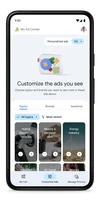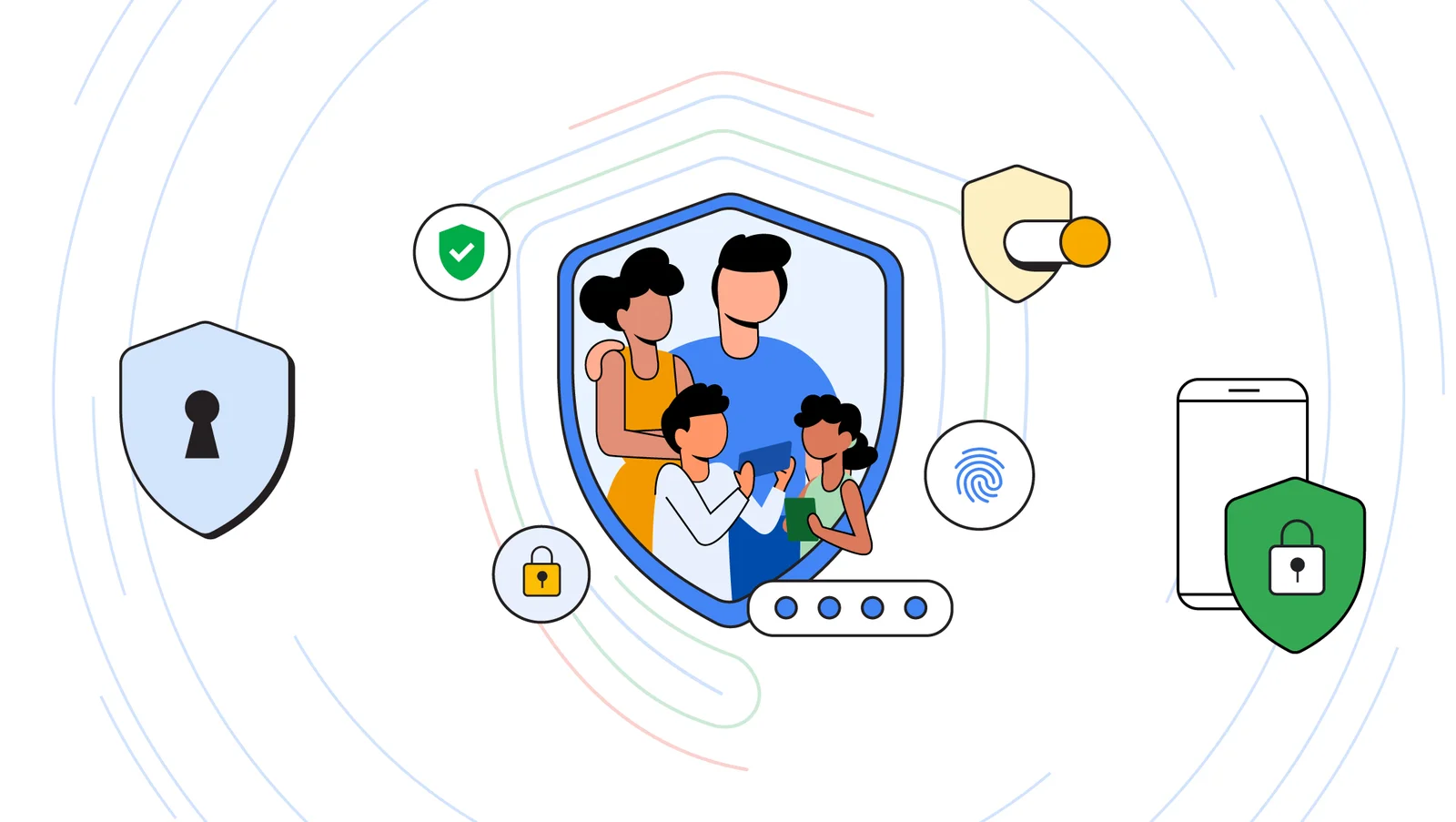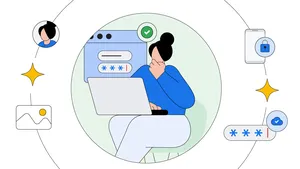Answering your questions about privacy and security at Google

Everyday the internet plays a vital role in the lives of millions of Australians - from finding answers to big questions, to running businesses, or just navigating to the closest cafe.
We help connect Australians to that information - and protecting the privacy and security of the people who use our services is our top priority.
Privacy and security look different to everyone, so we give you the tools to customise your own privacy settings and we take care of security so you don’t have to. But our commitment is the same to every person who uses our products: we will keep your personal information protected. We think everyone should be in the know about what data is collected, how their information is used, and most importantly, how they control the data they share with us.
Here are some of the top questions that people commonly ask us:
Does Google ever sell my personal information?
No. We never sell your personal information - not to advertisers, not to anyone.
You are in control of your personal information with settings that are simple to use. And we uphold responsible data practices to ensure that every product we make is private by design.
Can I control what information Google stores about me?
Yes - you can see a summary of what Google services you use and the data saved in your account from your Google Dashboard.
There are privacy controls like Activity Controls which allow you to switch the collection and use of data on or off, so you can decide how Google can work better for you.
Now, with our tools like auto-delete, it’s easier than ever to make decisions about your data directly within the Google services you use. For example, without leaving Search, you can review and delete your recent search activity, get quick access to relevant privacy controls from your Google Account, and learn more about how Search works with your data. You can quickly access these controls in Search, Maps, and the Assistant.
It is also important to note that you can use most of Google’s products completely anonymously, without logging in -- you can Search in incognito mode, or clear your search history; you can watch YouTube videos and use Maps. However, when you share your data with us we can create a better experience with our products based on the information shared with us.

What is Location History and how is it used?
When turned on, Location History provides helpful benefits across Google’s services like personalised maps, and recommendations based on places you’ve visited.
Turning on Location History can also help when it comes to finding your phone and seeing more useful ads.
Can Location History be switched off?
Yes - and Location History is already turned off by default.
Location History can only be turned on if you opt in. Once you’ve turned it on, you can switch it off again at any time. This is done in your Google Account’s Activity Controls. Switching it off will stop your device’s location being automatically saved, but will not change your settings for other location services like Google Location Services, Location Sharing, and Find My Device or any third party apps (not operated by Google) that you have given permission to use your location data.
When you turn on Location History, you can also control what’s saved in your Location History - such as looking back at the cafes you visited over the past month in Google Maps Timeline - which can be easily edited or deleted. To make sure you are happy with all location services, we recommend reviewing your location settings in all of your apps, including non-Google apps.
Is Google Assistant listening and recording my conversations?
No, it isn’t.
Google Assistant is designed to wait in standby mode until it is activated, like when you say, "Hey Google" or "Ok Google". In standby mode, it processes short snippets of audio (a few seconds) to detect an activation (such as “Ok Google”). If no activation is detected, then those audio snippets won’t be sent or saved to Google.
When an activation is detected, the Assistant comes out of standby mode to fulfil your request. The status indicator on your device lets you know when the Assistant is activated. And when it’s in standby mode, the Assistant won’t send what you are saying to Google or anyone else.
To help keep you in control, we're constantly working to make the Assistant better at reducing unintended activations.
What are you doing to keep my data and details safe and secure?
Every day, we keep people’s data safe and secure through industry-leading security technology, automatic, built-in protections, and ongoing vulnerability research and detection.
2-Step Verification adds an extra layer of security at sign in protecting your account even if a password is compromised. That’s why, in 2021, we started to turn it on by default for all newly created Gmail accounts.
Hackers frequently use phishing emails to steal personal information. Through AI spam-filtering capabilities, Gmail protects against phishing and malware attacks better than any other service - blocking nearly 10 million spam emails every minute every day.
You can find out more about the additional ways our advanced technologies protect accounts at safety.google.
Can I control personalised ads?
Yes, you can choose what you do and don’t see.
You can easily control what ads you see, and turn off personalised ads altogether, thanks to our easy to use My Ad Centre tool.
My Ad Centre gives you greater control of the ads you see on Google services, like Search, YouTube, and Discover, by giving you options for customising ads and managing your privacy settings – either directly from ads you see or in the My Ad Centre itself.
In My Ad Centre, you can easily control whether or not Google will show you personalised ads. You can turn on or off personalised ads on Google services at any time. When you turn on personalised ads, your ads may seem more relevant because your info and the choices you’ve made in My Ad Centre may be used to help find ads for products and brands that interest you.
When you turn off personalised ads, Google will not use the info or activity saved to your Google account or your choices in My Ad Centre to show you ads. Instead, the ads you see will be contextual – that is, they will be based on general factors like the time of day or the topic of the video, website, or app you're viewing.

How does Google decide what ads it shows me?
The Ads you see are personalised for you based on the preferences you select on My Ad Centre, previous searches, the sites you visit, ads you click and more.
For example, you may discover that you are seeing a camera ad because you’ve searched for cameras, visited photography websites or clicked on ads for cameras before. The 'Why this ad?' feature helps you understand why you are seeing a given ad.
Data helps us personalise ads so that they're more useful to you, but we never use the content of your emails or documents, or sensitive information like health, race, religion or sexual orientation, to tailor ads to you. And through My Ads Centre you can control the kinds of ads you see across Google on Search, YouTube and Discover. You’ll also be able to block sensitive ads and learn more about the information used to personalise your ad experience. Read more here.
Are you reading my emails to sell ads?
We do not scan or read your Gmail messages to show you ads.
When you use your personal Google Account and open the promotions or social tabs in Gmail, you'll see ads that were chosen to be the most useful and relevant for you. The process of selecting and showing personalised ads in Gmail is fully automated. This means the ads you see in Gmail are based on data associated with your Google Account such as your activity in other Google services like YouTube or Search.
To remember which ads you haven’t interacted with, avoid showing you these again, and show you ads you may like better, we save your past ad interactions, like which ads you've clicked or dismissed. Google does not use keywords or messages in your inbox to show you ads.
And if you have a work or school account, you will never be shown ads in Gmail. You can adjust your ad settings anytime. Learn more about Gmail ads. More here.
Privacy features and controls have always been built into our services, and we’re continuously working to make it even easier to control and manage your privacy and security.





